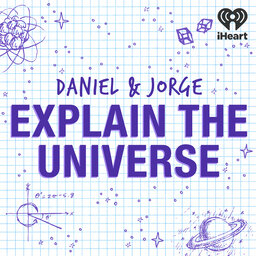What is the real charge of the electron?
Daniel and Jorge explain how the theory of "Renormalization" tells us that we measure is different from what is real.
Learn more about your ad-choices at https://www.iheartpodcastnetwork.com
See omnystudio.com/listener for privacy information.
 Daniel and Jorge Explain the Universe
Daniel and Jorge Explain the Universe


